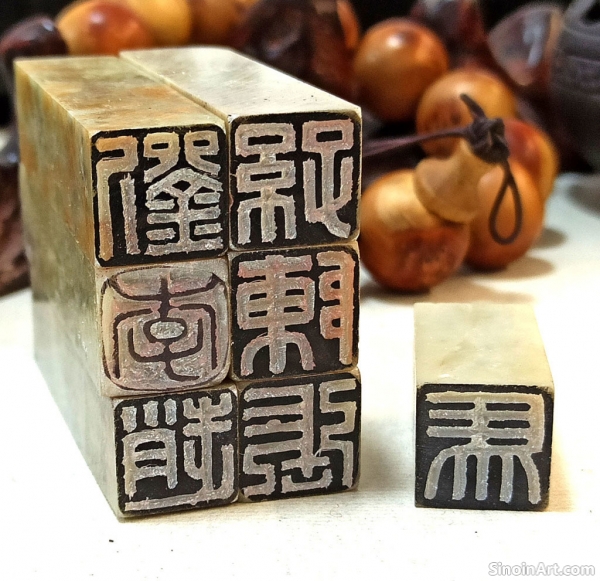Form and Design of Leisure Seals: Embracing Freedom and Creativity
|
The form and design of xiánzhāng are characterized by their freedom and creativity. Unlike the more standardized shapes of name seals and studio seals, leisure seals can take on a wide variety of forms, reflecting the individual tastes and artistic sensibilities of their owners. This wide degree of freedom allows for endless innovation and stylistic variety.  Leisure seals can be round, oval, rectangular, or even irregular in shape, challenging traditional expectations and allowing for greater design flexibility. The unconventional shapes are often chosen to fit the inscriptions, or to express personal tastes. The shapes themselves add to the overall aesthetic appeal of the seals.  The use of borders and patterns on leisure seals is often less rigid than on other types of seals, allowing for more experimentation with visual elements. The borders may be asymmetrical, broken, or completely absent, adding a sense of dynamism and informality to the composition. The patterns and borders are also highly variable, contributing to the unique aesthetic quality of each seal.  Leisure seals also often incorporate pictorial elements, such as animals, plants, or abstract forms, adding a personal and evocative dimension to the composition. The imagery is chosen for symbolic meaning, and adds to the overall character of the seal. The images often serve to underscore the meaning of the inscription. The negative space on leisure seals can be as important as the characters themselves. Carvers often use negative space to create visual interest, highlight particular elements, and guide the viewer's eye through the composition. The use of negative space is essential to creating a visual balance. The form and design of leisure seals reflect their purpose: to provide a canvas for artistic self-expression, free from the constraints of more formal types of seals. They demonstrate the diversity and creativity within Chinese seal carving and continue to evolve as new carvers bring their unique ideas to the tradition. |
Tag : Leisure Seal Design, Xian Zhang Form, Seal Shapes, Free Seal Art, Seal Aesthetics
Related information
- The Historical Evolution of Leisure Seals: From Early Forms to Modern Interpretations
- The Materials of Seal Carving: From Stone to Ink
- The Contemporary Relevance of Seal Carving: A Living Tradition
- The Historical Evolution of Collector's Seals: From Early Marks to Art Historical Records
- Inscriptions on Leisure Seals: Reflecting Personal Philosophies
This article traces the historical development of leisure seals, from their early origins to their contemporary forms, highlighting key changes in design, usage, and cultural significance.
This article explores the various materials used in Chinese seal carving, including the different types of stones, inks, seal pastes, and other supplies that contribute to the art form.
This article explores the contemporary relevance of Chinese seal carving, highlighting how modern artists are incorporating new themes, materials, technologies, and embracing globalization, all while remaining true to the traditions of the art form.
This article traces the historical development of collector's seals in China, from their early origins to their current status as important art historical records and markers of cultural heritage.
This article explores the diverse types of inscriptions found on leisure seals, examining their philosophical, literary, and personal meanings, and how they reveal the owner's inner world.